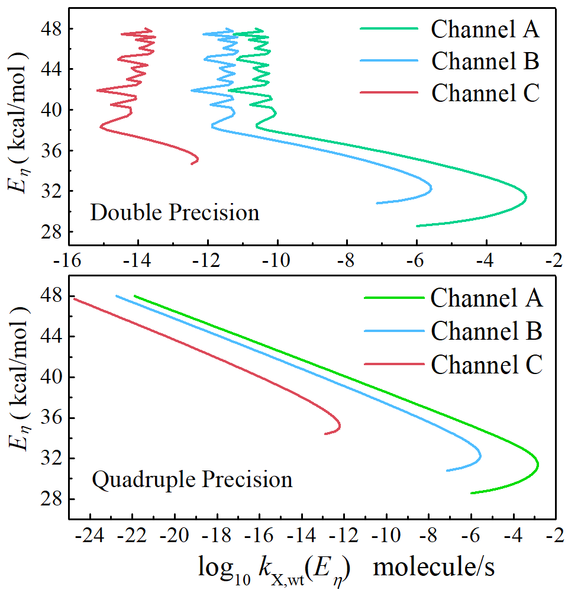Our new computer program, TUMME, solves the master equation by the method of chemically significant eigenmodes to calculate temperature- and pressure-dependent rate constants for thermal unimolecular chemical reactions and chemical activation reactions. A paper describing the program is now published:
R. M. Zhang, X. Xu, and D. G. Truhlar, TUMME: Tsinghua University Minnesota Master Equation program, Computer Physics Communications 270, 108140/1-17 (2021).
doi.org/10.1016/j.cpc.2021.108140
Share link for free access (expires Oct. 30, 2021):
https://authors.elsevier.com/a/1djlI2OIngMWU
The program, which includes a detailed manual, is available free of charge at https://comp.chem.umn.edu/tumme
TUMME calculates microcanonical flux coefficients (which are inputs to the master equation) by multi-structural variational transition state theory with small-curvature tunneling (MS-VTST/SCT) or by conventional transition state theory or RRKM theory (which is conventional transition state theory applied to unimolecular reactions) by using data read from output files of Gaussian, Polyrate, and/or MSTor.
The program is written in double precision with Python 3, and quadruple and octuple precision are also available for some subtasks in C++ (the higher precision is often necessary at low temperature or for competing reactions). The Python code can run in serial or parallel (multithreading and MPI), and the C++ code can run on a single processor or on multiple processors with OpenMP.

Weighted flux coefficients kX,wt for unimolecular dissociation of 2-methylhexyl radicals at 700 K and 10-6 torr; Eη is internal energy, and X equal to A, B, or C denotes one of three possible products. Double precision refers to 8 bytes per word, and quadruple precision refers to 16 bytes per word.